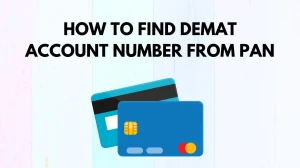
Snowball vs Avalanche Debt, What is the Difference Between Them?
In the topic of personal finance and debt management, two prominent strategies stand out, the Snowball and the Avalanche methods, which offer distinct ways to tackle and conquer debt.
Updated Sep 16, 2023
On This Page
- Snowball vs Avalanche Debt
- What is the Difference Between Snowball vs Avalanche Debt?
- Which One is Better: Snowball or Avalanche?
- What is a Debt Snowball?
- What is an Avalanche Debt?
- What is Debt Stacking?
- Advantages and Disadvantages of Using the Debt Snowball Method
- Advantages and Disadvantages of Using the Debt Avalanche Method
- Is the Debt Snowball Effective?
Snowball vs Avalanche Debt
Both debt avalanche and debt snowball are methods to pay off debt faster. In the debt avalanche, you tackle the high-interest debt first, which can save you more money in the long run. With the debt snowball, you start by paying off the smallest debt, aiming for quick wins to build motivation.
While the avalanche may save you more on interest, the snowball method focuses on small victories to stay motivated. The choice between them depends on your preference and financial situation.
What is the Difference Between Snowball vs Avalanche Debt?
|
Aspect |
Debt Snowball |
Debt Avalanche |
|
Priority |
Balances |
Interest Rates |
|
Initial Target |
Smallest debt |
Highest interest rate debt |
|
Progression |
Move to larger debts after the smallest is paid off |
Move to the next highest interest rate debt after the first is paid off |
|
Motivation |
Emphasizes quick wins to build motivation |
Focused on minimizing interest costs |
|
Interest Savings |
May not optimize interest savings but boosts motivation early on |
Typically results in lower overall interest payments |
Which One is Better: Snowball or Avalanche?
Whether the Debt Snowball or Debt Avalanche is better for you depends on your unique financial situation. If you want to save more money on interest in the long run, the Debt Avalanche, which prioritizes higher interest debts, is the more financially efficient choice.
However, some individuals prefer the Debt Snowball method because it offers quick wins by paying off smaller debts first, which can be more motivating and help maintain enthusiasm throughout your debt repayment journey.
What is a Debt Snowball?
The Debt Snowball method is a way to pay off your debts by starting with the smallest ones and then working your way up to the larger ones. It's like tackling the easiest tasks first to build momentum. To use this method, first, make a list of all your debts, from the smallest amount owed to the largest.
Then, focus on paying off the smallest debt while making the minimum payments on all your other bills. Once the smallest debt is paid off, take the money you were using for that payment and apply it to the next smallest debt, and so on. This method can help you see progress quickly and stay motivated as you work toward becoming debt-free.
Suppose you have the following debts:
- Credit Card A: $500 at 15% interest
- Credit Card B: $1,000 at 18% interest
- Personal Loan: $3,000 at 10% interest
- Car Loan: $5,000 at 5% interest
Using the Debt Snowball method, you would start by paying off Credit Card A first because it has the smallest balance. Let's say you allocate an extra $200 each month to pay off debt on top of your minimum payments.
Month 1: You pay off Credit Card A with the $500 balance.
Now, you're left with:
- Credit Card B: $1,000
- Personal Loan: $3,000
- Car Loan: $5,000
Month 2 and beyond: You apply the extra $200 to Credit Card B, in addition to the minimum payment. It takes you about 6 months to pay off Credit Card B.
Now, you're left with:
- Personal Loan: $3,000
- Car Loan: $5,000
Next, you tackle the Personal Loan, paying it off in approximately 15 months.
Finally, you put all your focus and the extra $200 toward the Car Loan, which takes around 25 months to pay off.
In this example, using the Debt Snowball method, you become debt-free in about 47 months (a little under 4 years).
What is an Avalanche Debt?
The Debt Avalanche method is a strategy for paying off your debts where you make the minimum payments on all your outstanding debts and then use any extra money you have to pay off the debt with the highest interest rate. This method is all about saving as much as possible on interest payments in the long run by tackling the most expensive debt first.
For example consider Starting Debts:
- High-Interest Credit Card: $3,000 at 18% interest.
- Personal Loan: $7,000 at 12% interest.
- Student Loan: $15,000 at 6% interest.
You have an extra $200 each month to put towards debt repayment.
Begin by targeting the Credit Card with the highest interest rate. With your extra $200, you make a total payment of $400 per month.
- Month 1: Credit Card balance reduced to $2,800.
- Month 7: Credit Card is completely paid off.
Next, you focus on the Personal Loan. You continue to allocate the extra $200 each month, making a total payment of $400 per month.
- Month 1: Personal Loan balance reduced to $6,800.
- Month 16: Personal Loan is paid off.
Finally, you tackle the Student Loan with the same extra $200 each month, making a total payment of $500 per month.
- Month 1: Student Loan balance reduced to $14,500.
- Month 31: Student Loan is paid off.
Using the Debt Avalanche method, you become debt-free in approximately 54 months (about 4 and a half years) while saving the most on interest payments by targeting the highest interest rate debts first.
What is Debt Stacking?
Debt stacking is a practical strategy for managing and paying off multiple debts efficiently. With this method, you allocate one fixed monthly payment for all your debts, and then you choose a specific account to focus on. You make substantial payments towards that chosen account while making minimum payments on the others. Once the targeted account is paid off, you move on to the next one.
As you eliminate balances, the money available for the next debt increases, allowing you to pay off your debts faster. Debt stacking is a flexible approach and can either prioritize paying off the debt with the highest interest rate (debt wrecking ball) or the one with the lowest balance (debt snowball), depending on your preference and financial goals. It's a practical way to take control of your debt and work towards becoming debt-free.
Advantages and Disadvantages of Using the Debt Snowball Method
Advantages:
Motivation Booster: The Debt Snowball method provides quick victories by paying off smaller debts first, which can boost your motivation to stay on track.
Simplicity: It simplifies the debt repayment process by prioritizing debts based on their balances, making it easier to manage.
Disadvantages:
Higher Interest Costs: Unlike the Debt Avalanche method, the Snowball method may result in higher overall interest costs because it doesn't prioritize debts with the highest interest rates.
Potentially Longer Repayment: It may take longer to become completely debt-free compared to more interest-focused strategies, like the Debt Avalanche method.
Advantages and Disadvantages of Using the Debt Avalanche Method
Advantages of Using the Debt Avalanche Method:
Saves Money: The Debt Avalanche method can significantly reduce the total amount of interest you pay over the life of your debts, which ultimately saves you money.
Faster Debt Payoff: It helps you get out of debt more quickly compared to methods that don't focus on interest rates.
Budget-Friendly: This approach is suitable for people who are disciplined and budget-oriented, as it prioritizes minimizing interest costs.
Disadvantages of Using the Debt Avalanche Method:
Requires Discipline: The Debt Avalanche method demands discipline and commitment to consistently allocate extra funds to pay off the highest-interest debt, not just making minimum payments.
Dependent on Discretionary Income: It assumes you have a consistent amount of discretionary income to apply to your debts. If your expenses increase or emergencies arise, it may not work as effectively.
Is the Debt Snowball Effective?
Yes, the Debt Snowball method can be effective for many people. It's particularly helpful for those who need a motivational boost to stay committed to paying off their debts. By starting with smaller debts and seeing them disappear quickly, you get a sense of achievement, which can help you stay on track.
However, it may not be the most cost-effective method in terms of minimizing overall interest payments. So, while it's effective for motivation, it may not be the most financially efficient strategy for everyone.
Snowball vs Avalanche Debt - FAQs
1. What is the Debt Snowball method?
The Debt Snowball method involves paying off smaller debts first to build motivation.
2. What is the Debt Avalanche method?
The Debt Avalanche method prioritizes paying off high-interest debts first to minimize overall interest costs.
3. Which method is better for motivation?
The Debt Snowball method is better for motivation as it provides quick wins.
4. Which method is more cost-effective?
The Debt Avalanche method is more cost-effective as it reduces overall interest payments.
5. Can I switch between these methods?
Yes, you can switch between these methods based on your financial goals and circumstances.




